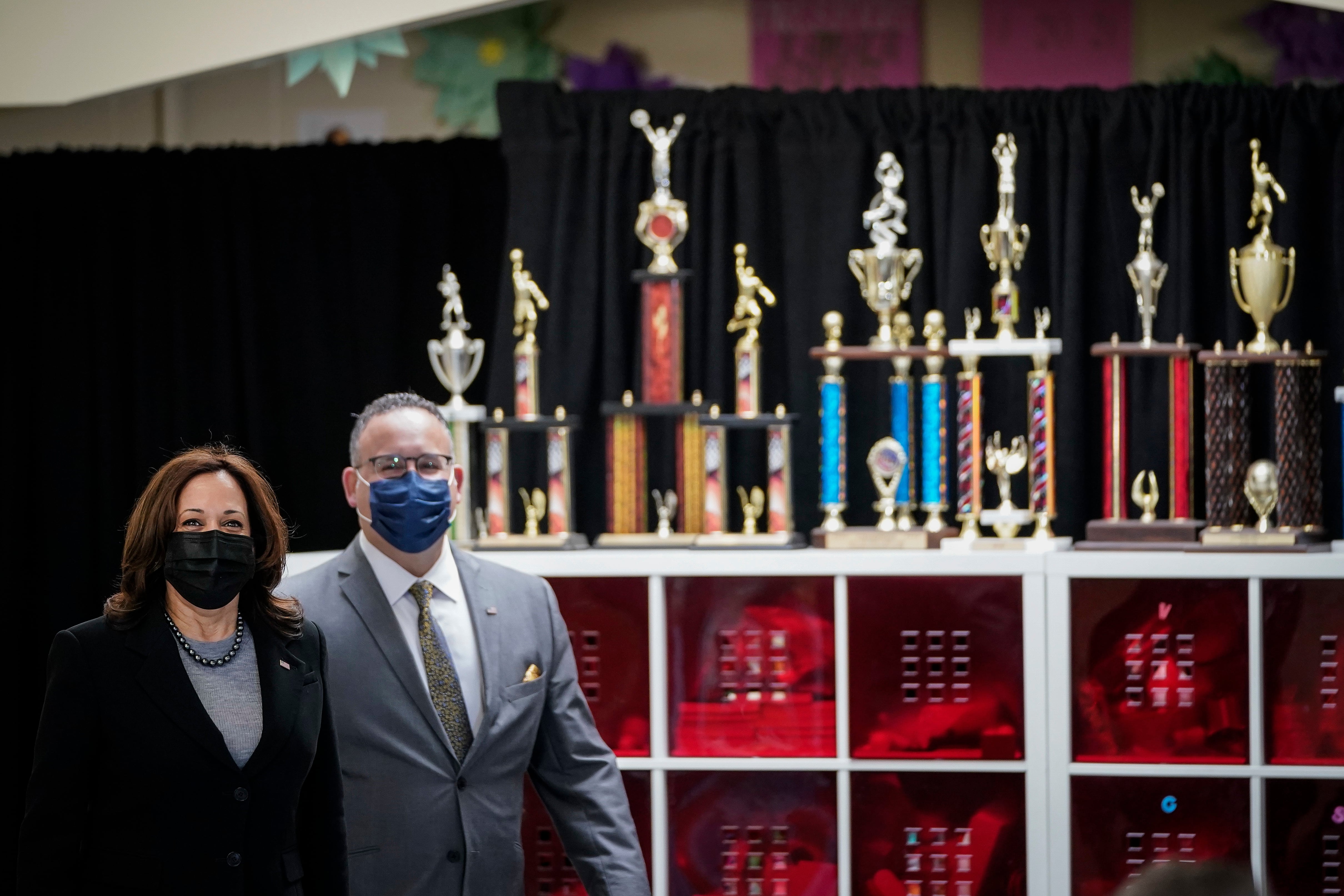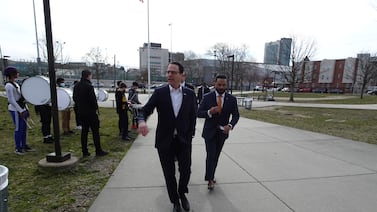Education Secretary Miguel Cardona issued a blunt call Friday for schools to address the mistrust felt by Black and brown communities as they push more students to return to classrooms.
It was concerning, Cardona said, that students of color have opted into in-person learning at lower rates than their white peers. “But it shouldn’t surprise us, if prior to pandemic we have had issues engaging and achieving the same outcomes for students of color as the general student population,” he said.
“It’s our responsibility to make sure that we’re focusing not only on better remote [learning], but also engaging in the communities to regain that trust, and share very specifically what we’re going to do to help those students achieve at high levels. They deserve it.”
Cardona’s comments come as new federal data show the racial disparities in which students were learning online remained wide in February. More than half of Black and Hispanic fourth graders, and nearly 70% of Asian fourth graders, were learning virtually, compared with only a quarter of white students in that grade. That pattern has been apparent all year, with districts serving more students of color less likely to offer in-person learning and families of color less likely to choose in-person learning when it is offered.
On Friday, the federal education department also released a wide-ranging set of guidance for school districts with suggestions for using stimulus money and helping students recover from the pandemic.
That document lays out ways schools can increase mental health support for students who’ve experienced trauma, re-engage students who’ve stopped coming to class, and help students catch up academically. It also encourages schools to come up with plans to support teachers who are dealing with their own stress, grief, and anxiety.
Notably, officials make suggestions in each section for how these strategies can be put into action fairly by paying particular attention to students of color, students from low-income families, and other disadvantaged students who’ve long experienced inequities in their schools. It’s an example of how Cardona is likely to lead the education department in the years to come, given his past focus on addressing racial and economic gaps in outcomes for students.
To address student mental health, for example, the document says schools can consider running 24/7 crisis lines where students can call or text a counselor if they’re going through an emotional crisis or having suicidal thoughts. But it also notes the barriers particular student groups may face when seeking help.
Students of color may have a greater sense of distrust because people of color are under-represented in the medical field, it notes, while English learners often face language barriers that lowers the care they receive, which could in turn make them less likely to seek help. Native American students have historically lacked access to culturally competent care, though they experience depression at higher rates than their peers.
Students living in places where COVID has taken a greater toll — often communities of color — and whose schools have been closed to in-person learning longer are likely to need even more support, officials say.
To find students who’ve been absent from school for many days, or who haven’t been engaged with their teachers, federal officials suggest leaning on personal outreach by school staff, rather than police officers, to avoid “unintentionally intimidating” students and their families. It highlights door-knocking efforts led by social workers in Hillsborough County, Florida and stipends given to teachers in Oakland, California so they could spend time outside their usual hours re-engaging students.
Officials say these should be “non-punitive” efforts, and that schools shouldn’t take steps like holding students back a grade or sending their parents to truancy court. Schools should also consider the unique needs of teens, who may now be working to support their family or caring for family members. “In these instances, additional flexibilities should be provided,” the document states.
Officials note many students who’ve been chronically absent or disengaged are students of color, or students experiencing homelessness who did not have reliable internet access during the pandemic.
As schools look to help students make up lost academic ground, federal officials say schools should keep students learning at their grade level as much as possible, rather than tracking them into lower-level tiers or reteaching them all the content they missed. They say schools should focus instead on filling in critical skills that will help them stay on pace, through tutoring, extra sessions before or after school, or summer school.
And as school districts encourage more students to come back into classrooms, federal officials say educators need to be mindful of the reasons why many parents of color have been hesitant to return, including the “physical, mental, and emotional safety” of their children. Some Asian families may be worried their children will be harassed, the document notes, while some Black families may be fearful their children will face disproportionate discipline, as they did before the pandemic.
For that reason, officials say, work to re-engage families should include efforts to “address any longstanding feelings of distrust resulting from students’ and families’ of color experiences in school prior to the pandemic and that may have been exacerbated by events of the last year.”
That’s something Cardona addressed Friday. “We know that Black and brown communities were negatively impacted by the pandemic more as well,” he said. “So they may be dealing with more loss. There may be issues of distrust, of how the system is going to support their students.”
The guidance also suggests shifts that would reverberate far beyond the pandemic, including changes to how states fund schools to more equitably account for students with the greatest needs. “The current crisis can serve as a call to action,” it says.







